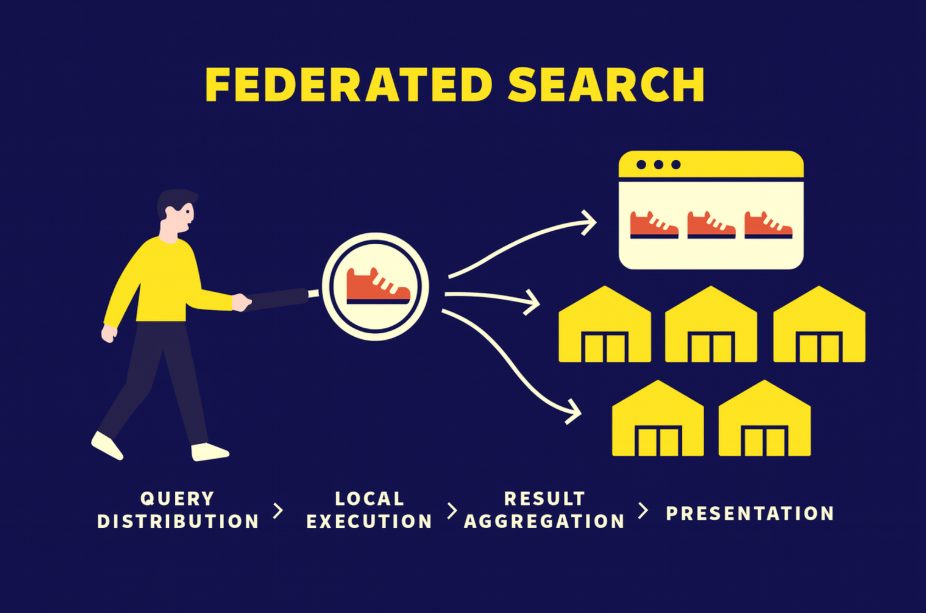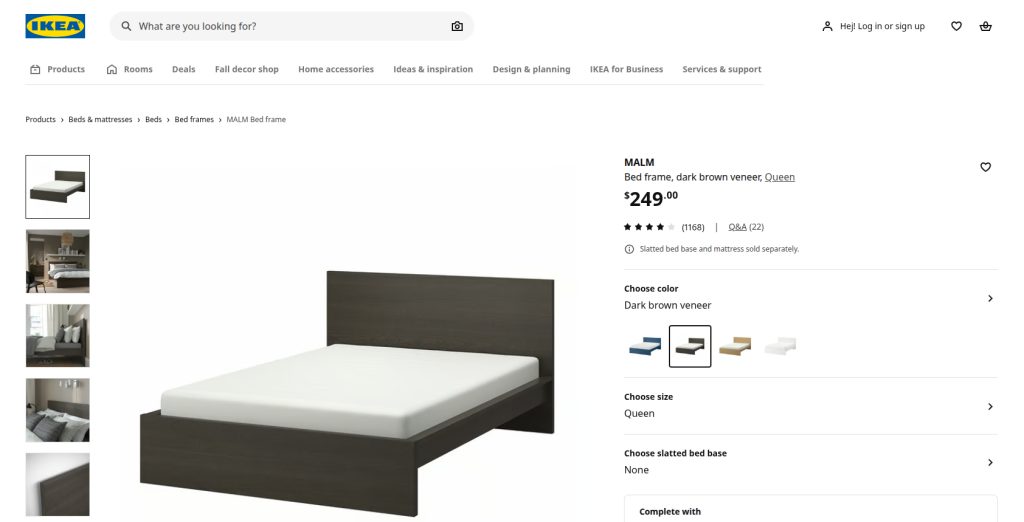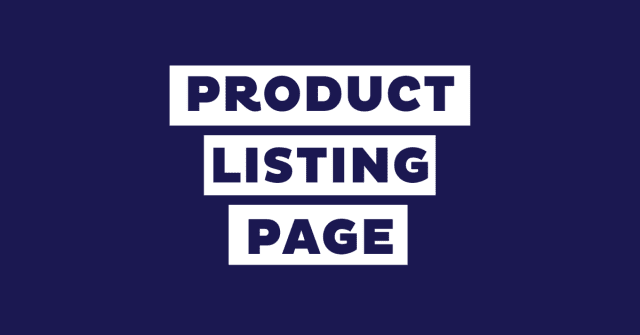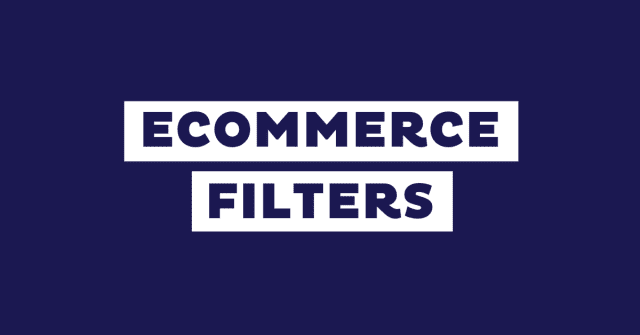Search is at the core of modern eCommerce. The right approach can make the difference between a smooth buying journey and lost sales.
There are two main types of search. Federated search looks through several databases in real time, while unified search gathers all data into one index for faster, more personalized results. They both aim to help users find what they need — but they work very differently.
This guide breaks down how they work, their pros and cons, use cases in eCommerce, and what to expect from emerging hybrid and AI-powered models.
What is Federated Search?
At its core, federated search is a way of searching across multiple, separate data sources at once without first combining them into a single database.
Instead of keeping one central index, federated search acts like a messenger: it takes the customer’s query (“red sneakers”), sends it to each connected source (your product catalog, your blog, your supplier’s stock feed), and then gathers the answers into a single results page.
For shoppers, it looks like “one search bar, one experience.” Behind the scenes, though, the system is juggling several different databases at the same time.

How Federated Search Works
Imagine you run a store, but instead of one large warehouse, your products are spread across five smaller ones. A customer comes in asking for “red sneakers.” Since there’s no central inventory list, you need to query each warehouse separately, gather their answers, and then present the combined results.
That’s essentially the logic behind federated search.
Technically, the process looks like this:
- Query distribution – The search system receives a request and sends it simultaneously to multiple independent sources (catalog databases, CMS content, third-party APIs).
- Local execution – Each source runs its own search using its own indexing and ranking logic.
- Result aggregation – The system collects responses from all sources and merges them into a single results page.
- Presentation – The results are displayed together, often grouped by source or ranked according to a common framework.
This model is powerful because it allows organizations to search across heterogeneous systems without first unifying them. The trade-off? Each source may differ in speed, ranking, and data format — which is where federated search can struggle compared to unified approaches.

Advantages of Federated Search
Federated search isn’t perfect, but it became popular for good reasons. For businesses juggling multiple systems and data silos, it can be a lifesaver. Here are the main advantages:
- Quick to Implement Across Disconnected Systems. You don’t need to restructure your entire tech stack or migrate everything into a single index. Federated search simply connects to your existing sources and pulls results from them directly.
- Flexible and Scalable. Since each system keeps its own data, you can add or remove sources without major rework. If you expand into a new product line or integrate a supplier’s stock, you just plug in the new database.
- Good for Compliance and Governance. In industries where data must remain siloed for legal reasons (finance, healthcare, government), federated search allows users to find information without physically merging sensitive data.
- Broader Search Coverage. Federated search shines when you want to surface more than just products. Shoppers can discover FAQs, blog posts, or sizing guides right alongside items they’re browsing — all from one search bar.
Disadvantages of Federated Search
Federated search can be useful in the right situations, but it comes with real drawbacks that make it less suited for modern eCommerce.
- Slower Performance. Because the system has to wait for multiple databases to respond before displaying results, federated search software is often slower than unified search. In eCommerce, even a small delay can cost you conversions.
- Inconsistent Ranking and Relevance. Each source applies its own search logic, so results can feel fragmented. One database might prioritize price, another might prioritize stock levels, while another might not support relevance ranking at all. The end result: a confusing experience for shoppers.
- Limited Personalization. Since queries are executed separately across different systems, it’s difficult to apply personalization rules across all results. For customers, this means generic listings instead of tailored recommendations.
- Harder to Maintain Quality Control. With federated search tools, you’re dependent on each source’s data quality and indexing. If one supplier’s database is slow, incomplete, or poorly structured, it can drag down the entire search experience.
- Not Built for Scale. As you add more data sources, latency increases and consistency decreases. What works for a handful of databases quickly becomes messy when dozens of systems are involved.
Use Cases of Federated Search
Federated search isn’t just a technical buzzword — it solves real problems when data lives in different places. Here are some scenarios where it makes sense:
1. Retailers with Multiple Catalogs or Suppliers
If your store pulls products from your own warehouse plus several dropshipping suppliers, a federated search lets shoppers browse them all in one go — even if those suppliers manage their own databases.
|
Example: A customer searches for “laptop bag” and sees results from your stock and your suppliers’ feeds without realizing they’re separate sources. |
2. Marketplaces or Multi-Vendor Platforms
Some marketplaces let each vendor keep their own database, but still offer one search bar across all of them. Instead of merging everything, the system queries each seller’s catalog in real time and combines the results.
You’ll also see this model in travel meta-search engines like Kayak or Skyscanner, which pull live results from multiple airlines at once.
|
Note: Federated search in marketplaces is uncommon. Platforms like Amazon or Etsy centralize seller data into one index for speed and consistency. |

3. Large Organizations with Silos
In enterprise search, companies often juggle multiple disconnected systems — HR portals, knowledge bases, policy documents, ticketing systems. Federated search allows employees to query them all from a single interface without merging the data.
4. Regulated Industries (Finance, Healthcare, Government)
In sectors where you can’t legally combine certain datasets (for compliance reasons), federated search provides a way to search across silos while keeping the data physically separate.
5. Knowledge-Heavy E-Commerce Stores
Beyond just selling products, many online shops also have blogs, how-to guides, reviews, and support docs. Federated search lets customers find that content right alongside products, improving the overall shopping journey.
In short: Federated search is most useful when your data must stay separate — whether that’s because of compliance rules, multiple suppliers, or simply the complexity of your tech stack. But when customers demand speed, relevance, and personalization, that’s where unified search starts to shine.
What is Unified Search?
If federated search is like checking several warehouses one by one, unified search is like having one giant, organized warehouse with a single master catalog.
With unified search, data from different sources is ingested, normalized, and indexed into one central search engine. When a user types in a query, the system isn’t running around asking multiple databases for answers — it’s looking at its own optimized index, which already contains all that information.
For the customer, this means faster, more consistent, and more relevant results. For the business, it means you can apply the same ranking, filtering, and personalization rules across everything, instead of dealing with fragmented results from multiple systems.
How Unified Search Works
The mechanics are straightforward, but powerful:
- Data ingestion – Product data, content, and other information are imported from different systems (ERP, CMS, supplier feeds, knowledge bases).
- Normalization & indexing – The search engine cleans, standardizes, and structures that data into a single index.
- Query execution – When a customer searches, the system queries this central index, not the original sources.
- Ranking & personalization – Results are ranked using consistent algorithms and can be enhanced with personalization, machine learning, or AI.
This model removes the variability of federated search. Everything is stored in one place, so speed, consistency, and flexibility dramatically improve.
Advantages of Unified Search
Unified search is the go-to model for modern eCommerce — and for good reason. By consolidating everything into one index, it solves many of the pain points that federated search can’t.
- Speed and Performance. Since queries hit a single, optimized index instead of waiting on multiple systems, results appear instantly. In eCommerce, that’s huge: shoppers won’t stick around for slow or inconsistent search.
- Consistent Ranking and Relevance. Unified search applies the same ranking and filtering rules across all your data, so results feel cohesive. Instead of stitching together answers from different systems (each with its own logic), customers see one smooth, reliable experience.
- Better Personalization. Because everything is indexed in one place, unified search engines can build a holistic picture of the shopper — blending past purchases, behavior, and preferences into tailored results. This simply isn’t possible when results are fragmented across separate sources.
- Richer Features and AI Enhancements. Unified indexes allow you to layer in advanced features like semantic search, synonym detection, and AI-driven relevance tuning. These improvements only work when your data is centralized and standardized.
- Scalability for Growing Businesses. As your catalog expands, unified search scales with you — making it the foundation of enterprise search in eCommerce, where millions of SKUs and global traffic demand consistent speed and relevance.
Disadvantages of Unified Search
Unified search is powerful, but it isn’t a silver bullet. Like any approach, it comes with trade-offs that businesses should consider before adopting it.
- Upfront Data Work. To build a unified index, you first need to ingest and normalize data from multiple sources. That can mean cleaning up inconsistent product descriptions, categories, or attributes before they can live in one index.
- Ongoing Maintenance. Once your index is set up, it requires regular updates to stay accurate. If supplier data changes or a CMS is updated, the unified index needs to sync those changes promptly.
- Complexity at Scale. For large enterprises, centralizing huge volumes of heterogeneous data can be complex. Integrating ERP, CRM, PIM, and content systems into one searchable structure takes planning.
- Higher Initial Investment. Compared to federated search, unified search often requires more upfront effort and resources. That investment usually pays off with speed and relevance — but it can feel heavier at the start.
Use cases of Unified Search
Unified search is increasingly the default choice for businesses that want to deliver fast, consistent, and personalized results. Here are some practical examples:
1. Large E-Commerce Stores with Expansive Catalogs
When you’re managing tens of thousands of SKUs across categories, unified search ensures shoppers can instantly find what they want. All data — from product details to availability — is indexed in one place, keeping results fast and accurate.
2. Marketplaces with Centralized Data
Unlike federated setups, most major marketplaces centralize seller data into a single index. This guarantees uniform ranking rules, smoother filters, and personalization across millions of products.

|
Amazon: Centralized Marketplace Search. Amazon centralizes seller and product data into one index, enabling fast, consistent, and personalized results across millions of items. |
3. Omnichannel Retailers
Retailers that sell online and in-store can unify stock information from warehouses, local stores, and eCommerce catalogs. That way, a shopper searching for “PS5 controller” sees both online availability and whether it’s in stock at their nearest store.

|
IKEA: Unified Omnichannel Search |
4. Content + Product Blends
Unified search doesn’t stop at products. It can integrate reviews, buying guides, size charts, or FAQs into the same index, ensuring shoppers get relevant information right in the results page.
|
Doofinder: Blending Products and Content |
5. AI-Driven Personalization
Because unified search builds a single view of the customer, it enables AI-driven personalization and features like “recommended for you,” semantic intent recognition, and AI-driven ranking. These enhancements thrive on centralized data, not fragmented silos.
Federated Search vs. Unified Search: Which One Should You Pick?
Both federated and unified search solve the same problem — helping people find what they need across multiple sources of information. But the way they do it, and the experience they deliver, is very different.
Key Differences at a Glance
| Feature | Federated Search | Unified Search |
| Where the search happens | In multiple independent databases (query sent out in real time). | In one centralized index where all data is pre-ingested. |
| Speed | Slower — must wait for all sources to respond. | Faster — queries a single optimized index. |
| Ranking | Inconsistent — each system applies its own rules. | Consistent — one ranking and relevance framework across all results. |
| Personalization | Limited — hard to apply rules across separate systems. | Strong — unified data allows advanced personalization and recommendations. |
| Scalability | Struggles as sources grow (more latency, more inconsistency). | Scales smoothly as catalog and data sources expand. |
| Best for | Compliance-heavy industries, organizations with strict data silos. | E-commerce, omnichannel retail, marketplaces, and customer-facing experiences. |
Challenges and Considerations
Choosing between federated and unified search isn’t just about picking a technology. It’s about balancing where your data lives, what your customers expect, and how fast you want to scale.
Here are the key challenges to consider:
1. Data Complexity
- Federated search works well if you have siloed systems that can’t be merged for compliance or political reasons.
- Unified search requires cleaning and structuring data up front — messy product attributes, duplicate entries, or inconsistent categories can slow down adoption.
If your catalog is large or rapidly growing, investing in unified search (with automated normalization like Doofinder provides) saves headaches later.
2. Performance Expectations
- Customers expect sub-second results. Federated search, which waits for multiple databases to respond, can introduce delays.
- Unified search is faster because it queries a single index — but only if the index is properly maintained.
3. Personalization and Relevance
- Personalization is nearly impossible in federated models because each system only sees a slice of the query.
- Unified search supports AI-driven ranking, semantic understanding, and recommendations, but it needs enough high-quality, centralized data to work.
4. Cost and Resources
- Federated search looks cheaper to start with, since it avoids major reindexing work.
- Unified search has higher upfront costs but usually pays off in conversion rate improvements, customer satisfaction, and lower bounce rates.
5. Long-Term Scalability
- Adding more sources to a federated model introduces more latency and inconsistency.
- Unified search scales more naturally — one index grows with you, instead of juggling dozens of connections.
Best Practices for Choosing the Right Approach
Deciding between federated and unified search isn’t just about comparing features. It’s about choosing the approach that aligns with your business goals, customer experience standards, and long-term growth plans.
1. Put User Experience Above All Else
Shoppers expect search to feel instant, accurate, and relevant. Even small delays or disjointed results can hurt conversion rates.
- Federated models often introduce inconsistency.
- Unified models provide one smooth, predictable experience.
2. Map Your Data Landscape
Take stock of where your data lives: product catalogs, ERP, CMS, reviews, supplier feeds. If your data must remain siloed (for compliance), federated may be the only option.
If it can be centralized, unified search creates a much cleaner foundation for delivering relevance and personalization.
|
For enterprise search, the decision often hinges on compliance and access controls (favoring federated) vs. discoverability and personalization at scale (favoring unified). |
3. Balance Quick Wins with Future Scale
Federated search can be faster to roll out, but performance and consistency often degrade as sources grow.
Unified search requires more upfront planning, but it scales more gracefully — a crucial factor if you’re expanding your catalog, regions, or channels.
4. Think Beyond Products
Search today isn’t just about finding a SKU. Customers expect reviews, FAQs, guides, and size charts to appear seamlessly alongside products. Unified search is far better suited to blending structured and unstructured content into one coherent experience.
5. Plan Ahead for AI and Personalization
Features like semantic intent recognition, recommendations, and relevance tuning depend on having a single, normalized index of data. That means unified (or hybrid models with unified at the core) will set you up for long-term success.
Hybrid and Emerging Approaches
The truth is, the debate between federated and unified search isn’t always black and white. Many organizations are starting to adopt hybrid approaches that combine the strengths of both models, while layering in new AI-driven capabilities.
1. Hybrid Models in Practice
In a hybrid setup, some data is centralized into a unified index (for speed, consistency, and personalization), while other data sources remain federated (queried on demand).
For example:
- A retailer might unify all product catalogs and reviews into one index, but query a live supplier database federated-style for real-time stock updates.
- A travel platform might unify hotel and rental car data, but use federated calls for airline availability that changes minute by minute.
This approach delivers the performance of unified search while keeping the flexibility of federated connections where real-time data or compliance constraints make it necessary.
Expedia: Hybrid Travel Search
Expedia uses a unified index for hotels, cars, and vacation packages, ensuring fast and consistent results. At the same time, it relies on federated queries for airline data, since flight availability and pricing change in real time. This hybrid setup blends speed with flexibility, delivering a seamless booking experience.


2. AI-Powered Search as the Bridge
Emerging search platforms are going beyond the old federated vs. unified debate by introducing AI and semantic search:
- Vector search allows the engine to understand meaning, not just keywords.
- Semantic matching bridges the gap when customer queries don’t align perfectly with catalog data.
- Personalization uses behavior and context to reorder results in real time.
These capabilities depend heavily on unified indexing — but hybrid models can still benefit, especially when paired with intelligent aggregation and ranking.
3. The Path Forward for eCommerce
For most eCommerce businesses, the most effective strategy isn’t choosing one side forever. It’s about building a search foundation that can evolve:
- Unified at the core, for speed and personalization.
- Federated connections where needed, for flexibility.
- AI layered on top, for smarter, more human search experiences.
The takeaway: The future of search isn’t “federated vs. unified.” It’s hybrid and AI-driven models that deliver the best of both worlds — flexibility for businesses and seamless experiences for shoppers.
Future Trends in Search
Search is evolving faster than ever. What once felt like a purely technical decision — federated vs. unified — is now being reshaped by AI, large language models, and rising customer expectations. Here are the trends defining the future of search:
1. AI-Powered and Semantic Search
Traditional keyword-based search struggles with intent. If a shopper types “cheap running shoes,” they don’t want results that just match the word “cheap.” They want affordable sneakers suited for running.
- Semantic search bridges this gap by understanding context and meaning, not just keywords.
- Vector search and embeddings let systems find related results even when the wording doesn’t match.
This makes search feel more natural — almost like talking to a knowledgeable store assistant.
Doofinder: AI-Powered Search Made Simple
Doofinder brings semantic and AI-driven search to eCommerce without the complexity. It understands shopper intent, re-ranks results in real time, and blends products with helpful content — boosting both speed and relevance. Ready to try it? Start your free trial here.
2. The Role of Large Language Models
Large language models (LLMs) are pushing search beyond retrieval. Instead of just returning a list of products or documents, they can:
- Summarize information across sources.
- Re-rank results based on conversational cues.
- Power chat-style product discovery, where a shopper might type: “Show me sustainable running shoes under $100, good for daily jogging.”
For eCommerce, this means the line between search and recommendations is blurring.
3. Evolving User Expectations
Customers are no longer impressed with basic search bars. They expect:
- Instant results (sub-second speed).
- Personalized suggestions based on their behavior.
- Omnichannel consistency — the same search experience whether they’re on mobile, desktop, or in-store kiosks.
- Helpful guidance, not just results — think FAQs, sizing guides, reviews, and product content all surfaced seamlessly.
In short, shoppers want answers, not just listings.
4. From Search to Discovery
The future of search is proactive. Instead of waiting for a shopper to know what they want, search systems will:
- Anticipate intent.
- Offer personalized collections.
- Blend products, content, and recommendations into a single flow.
This turns search from a utility into a discovery engine that drives engagement and revenue.
Conclusion
The choice between federated and unified search isn’t just technical — it’s strategic.
- Federated search is useful when data must remain siloed, or when you need to connect multiple systems without heavy restructuring.
- Unified search is the foundation for modern eCommerce, enabling speed, personalization, and seamless experiences that keep customers engaged.
- And increasingly, hybrid and AI-driven models are bridging the gap, giving businesses the flexibility of federated inputs with the performance of unified indexing.
For eCommerce, the direction of travel is clear: customers expect instant, personalized, discovery-driven search. That means building on a unified core, enhanced by AI and adaptable to future trends like semantic search and LLM-powered product discovery. At Doofinder, we believe search should do more than return results — it should drive conversion, loyalty, and growth. That’s why we help eCommerce businesses move beyond the limitations of siloed systems and deliver the kind of fast, intelligent search experiences shoppers now demand.








